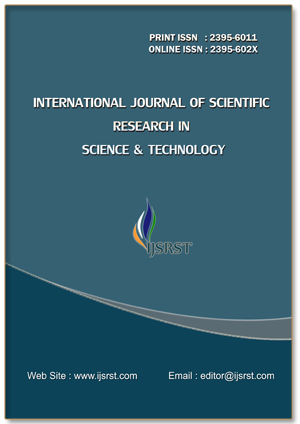Development of In-house Chest Phantom for Pediatric Cancer Cases
DOI:
https://doi.org/10.32628/IJSRST2512129Keywords:
Lung Cancer, Chest Phantom, BeeswaxAbstract
This study aims to develop an in-house phantom that can more cheaply represent pediatric lung cancer cases. The materials used in this study were polymethyl methacrylate (PMMA) as a substitute for soft tissue, polyurethane (PU) foam as a substitute for lung tissue, and calcium carbonate as a replacement for rib bones. Cancer or nodules were represented using beeswax. The phantom evaluation was conducted using IndoQCT software, with parameters such as CT number, noise, signal-to-noise ratio (SNR), and contrast-to-noise ratio (CNR). The CT numbers of cancer/nodule, normal lung, soft tissue, and bone for the in-house phantom are -217 to -117, -979, 80, and 871 HU, respectively. As comparison, the CT number of cancer/nodule, normal lung, soft tissue, and bone for the real patients are -141 to -103, -906, 73, and 743 HU, respectively. These findings indicate that the CT number, noise, SNR, and CNR values for the substitute materials used in the in-house phantom closely resemble the imaging values of patients with cancer/nodules. Thus, the materials used can effectively represent human tissue substitutes.
📊 Article Downloads
References
Bisogno G, Sarnacki S, Stachowicz-Stencel T, et al. Pleuropulmonary blastoma in children and adolescents: The EXPeRT/PARTNER diagnostic and therapeutic recommendations. Pediatr Blood Cancer. 2021;68 Suppl 4(Suppl 4):e29045. doi:10.1002/pbc.29045 DOI: https://doi.org/10.1002/pbc.29045
Wang P, Martel P, Hajjam ME, Grimaldi L, Giroux Leprieur E; ’AP-HP / Universities / Inserm COVID-19 research collaboration and AP-HP Covid CDW Initiative. Incidental diagnosis of lung cancer on chest CT scan performed for suspected or documented COVID-19 infection. Respir Med Res.
Javed, R., Abbas, T., Khan, A.H. et al. Deep learning for lung cancer detection: a review. Artif Intell Rev 57, 197 (2024). DOI: https://doi.org/10.1007/s10462-024-10807-1
Haleem A, Javaid M. Role of CT and MRI in designing and developing an orthopaedic model using additive manufacturing [published correction appears in J Clin Orthop Trauma. 2020 Nov-Dec;11(6):1169-1171.
Pengpan T, Rattanarungruangchai N, Dechjaithat J, Panthim P, Siricharuwong P, Prapan A. Optimization of Image Quality and Organ Absorbed Dose for Pediatric Chest X-Ray Examination: In-House Developed Chest Phantom Study. Radiol Res Pract. 2022;2022:3482458. Published 2022 Apr 16. doi:10.1155/2022/3482458 DOI: https://doi.org/10.1155/2022/3482458
Muhammad, N. A., Kayun, Z., Abu Hassan, H., Wong, J. H. D., Ng, K. H., & Karim, M. K. A. (2021). Evaluation of organ dose and image quality metrics of pediatric CT chest-abdomen-pelvis (CAP) examination: an anthropomorphic phantom study. Applied Sciences, 11(5), 2047. DOI: https://doi.org/10.3390/app11052047
Henriques, L. M. S., Cerqueira, R. A. D., Santos, W. S., Pereira, A. J. S., Rodrigues, T. M. A., Júnior, A. C., & Maia, A. F. (2014). Characterization of an anthropomorphic chest phantom for dose measurements in radiology beams. Radiation Physics and Chemistry, 95, 296-298. DOI: https://doi.org/10.1016/j.radphyschem.2012.12.037
Mufida, W., Utami, A. P., & Dewi, S. N. (2020). Making Radiological Phantoms Made from Local Wood as a Substitute for Human Bones. Journal of Diagnostic Imaging (JImeD), 6(1), 7-10. DOI: https://doi.org/10.31983/jimed.v6i1.5404
Mille MM, Griffin KT, Maass-Moreno R, Lee C. Fabrication of a pediatric torso phantom with multiple tissues represented using a dual nozzle thermoplastic 3D printer. J Appl Clin Med Phys. 2020;21(11):226-236. doi:10.1002/acm2.13064 DOI: https://doi.org/10.1002/acm2.13064
Jamal, Nurul HM, Inayatullah S. Sayed, and Waliullah S. Syed. "Estimation of organ absorbed dose in pediatric chest X-ray examination: A phantom study." Radiation Physics and Chemistry 166 (2020): 108472. DOI: https://doi.org/10.1016/j.radphyschem.2019.108472
Mohammed Ali A, Al-Murshedi S. Low-cost chest paediatric phantom for dose optimization: construction and validation. Radiologia (Engl Ed). 2023;65(4):327-337. doi:10.1016/j.rxeng.2022.11.001 DOI: https://doi.org/10.1016/j.rxeng.2022.11.001
Xiang, Z., & Spector, M. (2006). Biocompatibility of materials. Encyclopedia of Medical Devices and Instrumentation. DOI: https://doi.org/10.1002/0471732877.emd012
Chu PW, Yu S, Wang Y, et al. Reference phantom selection in pediatric computed tomography using large, multicenter registry data. Pediatr Radiol. 2022;52(3):445-452.doi:10.1007/s00247-021-05227-0 DOI: https://doi.org/10.1007/s00247-021-05227-0
Heryani, H., Sutanto, H., Anam, C., & Reskianto, A. D. (2020). Development of Synthetic Bones for ANSI Chest Phantom Dosimetry. European Journal of Advances in Engineering and Technology, 7(9), 12-17.
Anam, C., Amilia, R., Naufal, A., Fujibuchi, T., & Dougherty, G. (2025) A statistical-based automatic detection of a low-contrast object in the ACR CT phantom for measuring contrast-to-noise ratio of CT images. Biomed Phys Eng Express, 11(1), 017001. DOI: https://doi.org/10.1088/2057-1976/ad90e9
Anam, C., Naufal, A., Budi, W. S., Sutanto, H., Haryanto, F., & Dougherty, G., (2023) IndoQCT: a platform for automated CT image quality assessment. Med Phys Int J. 11, 328–36
Liu F, Wei Y, Zhang H, Jiang J, Zhang P, Chu Q. NTRK Fusion in Non-Small Cell Lung Cancer: Diagnosis, Therapy, and TRK Inhibitor Resistance. Front Oncol. 2022;12:864666. Published 2022 Mar 17. DOI: https://doi.org/10.3389/fonc.2022.864666
Wibowo, N. P. E., Susilo, S., & Sunarno, S. (2016). Image Proficiency Test of Digital Radiographic System Exposure Results at the Unnes Medical Physics Laboratory. Unnes Physics Journal, 5(1), 23-29.
Masuda T, Funama Y, Kiguchi M, et al. Radiation dose reduction based on CNR index with low-tube voltage scan for pediatric CT scan: an experimental study using anthropomorphic phantoms. Springerplus. 2016;5(1):2064. DOI: https://doi.org/10.1186/s40064-016-3715-y
Yücel, H., & Safi, A. (2021). Investigate the suitability of newly developed epoxy-based phantom for child's tissue equivalency in paediatric radiology. Nuclear Engineering and Technology, 53(12), 4158-4165. DOI: https://doi.org/10.1016/j.net.2021.07.002
Downloads
Published
Issue
Section
License
Copyright (c) 2025 International Journal of Scientific Research in Science and Technology

This work is licensed under a Creative Commons Attribution 4.0 International License.
https://creativecommons.org/licenses/by/4.0




